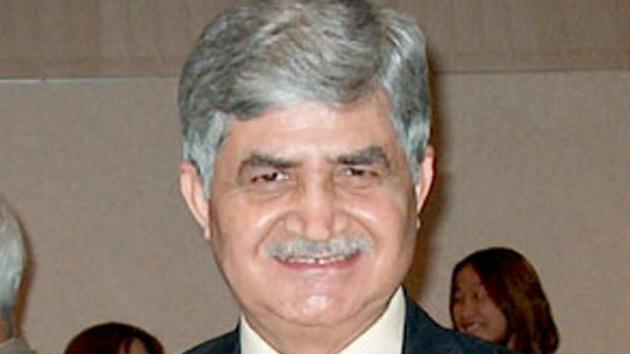‘Intrusion can’t be compared to Kargil, unless it escalates’: General VP Malik
Former chief of army staff General Ved Prakash Malik says Xi want to retake territories China believes it had controlled earlier.
Chandigarh: Former chief of army staff General Ved Prakash Malik, who was the helm during the Kargil war, spoke to Ramesh Vinayak about the military escalation on the Line of Actual control that led to the killing of 20 Indian soldiers in the deadliest border clash in last four-and-a-half decades between with China, the fallout of the escalation. Edited excerpts of an email interview:

What is your reading of the deadly clash between Indian and Chinese soldiers in Ladakh? What makes this an extraordinary escalation?
Two facts stand out from the present face-off: the People Liberation Army (PLA) encroachment across the LAC in Galwan Valley and in the disputed area of Fingers, North of Pangong Tso, has been a well-planned military activity; and military-level dialogue and understanding on the LAC has no sanctity for PLA. This military action has eroded whatever confidence was created with China at the military level, and trust at diplomatic and political levels.
From the defence standpoint, what are the most crucial consequences?
Despite several agreements and protocols, special representative-level talks and political summits to maintain peace and tranquillity along the LAC, the number of PLA attempts to encroach upon undisputed and disputed territories have increased. The level of violence -- from scuffles to stone pelting and the use of nails-embedded wooden clubs to kill opponent soldiers -- has increased. I foresee larger deployment of troops on both sides along the LAC to ensure security of our territory and assets. This will also require urgent improvement of military infrastructure to sustain troops deployed.
What do you see as the tactical and strategic objectives of China’s multiple and in-depth transgressions and holding areas that India has so far seen as its side of the LAC?
China under President Xi Jinping is committed to retake all territories it perceives to have belonged to China in the past. Its attempts to execute salami slicing or creeping encroachments avoiding major escalation will continue. We can expect more such military level activities, particularly in Ladakh, Sikkim and Arunachal Pradesh.
Do you think our military response on the ground was adequate and effective enough to countervail the Chinese intrusion?
As per past practices in the Demchok, Depsang, Chumar areas in Ladakh and in Doklam, the effort at military and diplomatic levels was to defuse and disengage. This has been the government’s policy and the usual response to maintain peace and tranquillity and avoid violent escalation. The army has gone as per those policy guidelines. These guidelines may change hereafter.
What options does India have for the restoration of status quo ante in the region and to counter China while keeping its aggression below the threshold of actual conflict?
While the armed forces have to be prepared for any military escalation, it is for the Cabinet Committee on Security to consider wider geopolitical and strategic aspects and then give further directions. I think the government will now explore diplomatic and political level possibilities to get the encroachments vacated before going in for escalation.
Is a localised military response still one of the options?
Any military-level dialogue at this stage is unlikely to produce desired results. It has to be tackled at the diplomatic and political levels now. However, with prevailing tension and anger among troops who are in an eyeball to eyeball situation, a violent escalation cannot be ruled out. The armed forces have to remain extra alert for any military action.
What, in your assessment, are the chances of the situation flaring up along the LAC?
I do not expect the situation will develop into a full-fledged war or even major skirmishes along the length of our border. It is likely to remain localised. That, however, does not mean that we should become complacent militarily or politically.
Amid heightened antagonism and mistrust between India and China, what will be the most important geostrategic consequences of a tense LAC for India vis-à-vis Pakistan?
Pakistan may attempt to intensify its sponsored terrorist activities in J&K, and ceasefire violations along the LoC (Line of Control) and AGPL (Actual Ground Position Line). India has the capability to handle any such escalations.
Why it is crucial to resolve or freeze the border dispute with China?
The border dispute must be resolved peacefully or frozen till both nations can find a peaceful solution. That way both nations will be able to contribute towards peace, tranquillity and prosperity of Asia and also improve the quality of life of their people.
Is a two-front scenario now more real than ever before?
Unless the border dispute is resolved peacefully, such a possibility in the north-west part of India cannot be ruled out in the middle distant horizon.
Do you see any parallel between Pakistan’s intrusion of Kargil in 1999 and China’s intrusion in Ladakh?No. The Pakistani military and political objectives in Kargil were much larger. It became a limited war situation. The present Chinese intrusion in Ladakh, unless it escalates further, cannot be compared to Kargil conflict. Given the complexity and high-level bilateral and multilateral interaction (including security) between India and China, the stakes in any India-China conflict, whether large-scale or limited, will be much higher.






